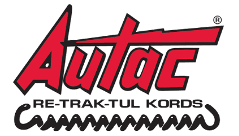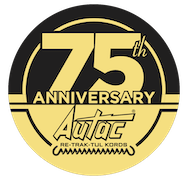In modern industries and households, electrical power connections often need flexibility, mobility, and safety. Spiral power cables, also known as coiled power cables or retractable power cords, meet these needs perfectly. They combine strength, elasticity, and space efficiency, providing a reliable power supply to moving equipment or portable devices.
Whether in factories, hospitals, vehicles, or offices, spiral power cables help maintain organized, clutter-free environments while ensuring electrical performance and durability. This guide explains what spiral power cables are, how they work, their key benefits, and factors to consider when choosing the right one.
What Is A Spiral Power Cable?
A spiral power cable is an electrical cable designed in a coiled or spring-like shape. Unlike straight cables, it can extend when pulled and retract automatically when released. This makes it ideal for applications where movement and flexibility are essential.
The coiled design provides three main advantages:
-
It prevents tangling or knotting.
-
It reduces wear and tear from constant bending.
-
It saves space when not in use.
Spiral cables are made with flexible materials and finely stranded copper conductors, ensuring durability even under continuous mechanical stress. They are widely used in industrial automation, medical devices, automotive systems, and consumer electronics.
How Spiral Power Cables Work
The functionality of a spiral cable depends on its elastic insulation and coil geometry. The outer sheath is usually made from flexible, durable materials such as polyurethane (PUR), thermoplastic elastomer (TPE), or PVC.
When the cable is extended, the coiled structure allows it to stretch without applying stress on internal conductors. When released, it recoils smoothly, returning to its original compact form.
Internally, spiral cables use fine-stranded copper wires that can bend and flex repeatedly without breaking. This design ensures stable electrical transmission even during constant motion, making spiral cables a preferred choice in environments that require mobility and safety.
Main Components Of A Spiral Power Cable
Every spiral power cable consists of several components that ensure performance and reliability:
-
Conductors – Usually fine-stranded copper or tinned copper for maximum flexibility and conductivity.
-
Insulation Layer – Surrounds each conductor to prevent electrical leakage.
-
Jacket (Outer Sheath) – Provides mechanical and environmental protection.
-
Coil Structure – The spiral shape that allows extension and retraction.
-
Connectors / Plugs – Attach to power sources or devices.
Each component can be customized according to the application, voltage requirement, or environmental condition.
Key Features Of Spiral Power Cables
Spiral cables are designed to deliver both mechanical flexibility and electrical performance. Here are their defining features:
1. High Flexibility
The coiled geometry and fine-stranded conductor design allow extensive stretching and bending without damage.
2. Compact and Retractable
The spiral structure retracts automatically after use, keeping workspaces organized and minimizing tripping hazards.
3. Strong Mechanical Resistance
Durable outer jackets resist abrasion, compression, and twisting — ideal for rough industrial or workshop use.
4. Electrical Reliability
Spiral power cables maintain consistent current flow and insulation integrity, even during constant motion.
5. Custom Lengths and Designs
Available in a range of coil diameters, colors, and conductor counts to suit specific needs.
6. Enhanced Safety
Reduces risks of short circuits and accidents caused by tangled or damaged cords.
Advantages Of Spiral Power Cables
Using spiral power cables offers a wide range of practical and safety benefits.
1. Space Efficiency
When not stretched, the coiled design occupies minimal space. This is especially useful in compact or mobile setups.
2. Longer Lifespan
The coiled structure absorbs mechanical stress, protecting conductors and insulation from fatigue and cracking.
3. Reduced Cable Damage
Unlike straight cables that drag on the ground, spiral cables stay elevated, reducing exposure to abrasion or sharp edges.
4. Easy Mobility
Ideal for moving machinery or handheld tools where power needs to follow movement seamlessly.
5. Professional Appearance
Provides a clean, organized look suitable for hospitals, offices, and professional environments.
6. Safety and Organization
By preventing loose cables on floors, spiral cables reduce tripping hazards and improve safety compliance.
Common Applications Of Spiral Power Cables
Spiral power cables are used across a wide range of industries and devices due to their durability and flexibility.
1. Industrial Automation
Used in robotic arms, conveyor systems, and production lines where equipment moves frequently.
2. Automotive and Transport
Common in trailers, electric vehicle chargers, and maintenance workshops for flexible power supply.
3. Medical and Laboratory Equipment
Ideal for patient monitors, imaging devices, and diagnostic instruments requiring clean, flexible power connections.
4. Communication Systems
Used in telephones, intercoms, and headsets for retractable power or signal connections.
5. Consumer Electronics
Found in devices like vacuum cleaners, hair dryers, and kitchen appliances.
6. Aerospace and Defense
Used where high reliability, lightweight design, and temperature resistance are critical.
Materials Used In Spiral Power Cables
The material composition of a spiral power cable determines its flexibility, environmental resistance, and cost.
1. PVC (Polyvinyl Chloride)
-
Economical and flexible.
-
Suitable for light-duty applications like office or home use.
2. PUR (Polyurethane)
-
Extremely durable and resistant to oil, abrasion, and chemicals.
-
Common in industrial and outdoor environments.
3. TPE (Thermoplastic Elastomer)
-
Combines flexibility with excellent temperature resistance.
-
Suitable for heavy-duty and mobile applications.
4. Silicone Rubber
-
Excellent for high-temperature and medical applications.
-
Highly flexible and resistant to cleaning agents.
Each material offers specific advantages based on environmental and mechanical demands.
Choosing The Right Spiral Power Cable
Selecting the right spiral cable requires evaluating electrical, mechanical, and environmental factors. Here’s what to consider:
1. Application
Define where and how the cable will be used — industrial, automotive, or medical. Each setting requires specific material and design features.
2. Voltage and Current Rating
Ensure the cable’s electrical capacity matches your equipment’s requirements to avoid overheating.
3. Extension Length
Check the maximum stretch length (usually 3–5 times its coiled size). Overstretching can cause permanent deformation.
4. Environmental Conditions
Consider factors like temperature, humidity, oil exposure, or UV radiation. Choose a jacket material suitable for your environment.
5. Connector Type
Select the appropriate plug or connector (e.g., IEC, NEMA, or custom molded connectors) for seamless integration.
6. Flex Life
If the cable will undergo constant motion, choose high-flex conductors rated for millions of bending cycles.
Maintenance And Safety Tips
Proper care ensures spiral power cables remain safe and functional for years:
-
Avoid overstretching the cable beyond its rated length.
-
Inspect regularly for damage, fraying, or wear.
-
Keep clean and dry to prevent corrosion or insulation damage.
-
Store properly in a coiled position when not in use.
-
Do not overload the cable beyond its current rating.
-
Ensure strain relief near connectors to prevent breakage.
Regular maintenance improves performance and minimizes replacement costs.
Future Trends In Spiral Power Cables
As technology advances, spiral power cables are evolving with smarter and more sustainable designs. Emerging trends include:
-
Hybrid cables combining power and data transmission.
-
Eco-friendly insulation materials reducing environmental impact.
-
High-flex life compounds that endure millions of cycles.
-
Smart cables with built-in sensors for real-time monitoring of current and temperature.
These innovations ensure spiral power cables continue to meet the growing demands of automation and mobility.
Conclusion
Spiral power cables are an essential component in today’s connected and mobile world. Their flexibility, durability, and compact design make them indispensable in industries ranging from manufacturing to healthcare and consumer electronics.
When choosing a spiral cable, always consider the environment, electrical ratings, and mechanical needs. A high-quality spiral power cable ensures efficient power delivery, minimizes clutter, and enhances safety — all while offering long-lasting reliability.
In short, spiral power cables are not just a practical choice; they are a smart investment in safety, efficiency, and performance.




Recent Comments